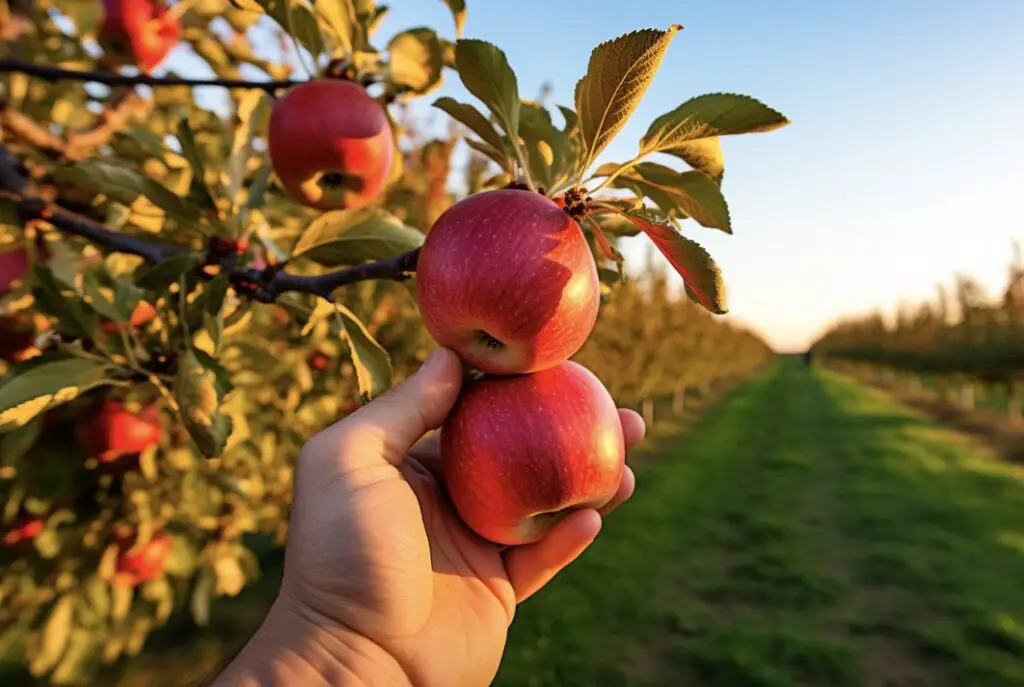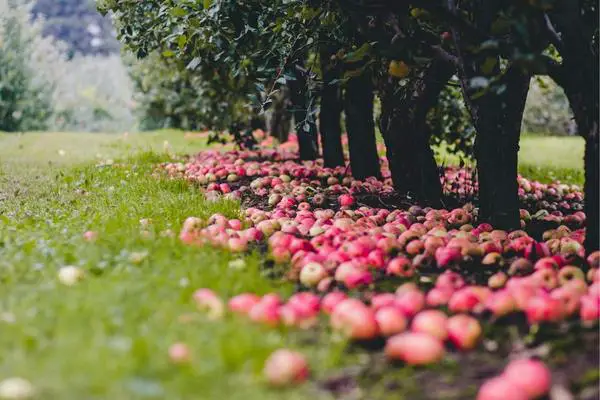Hey there, fellow cider enthusiasts! I’m a professional brewer who’s spent countless hours exploring the world of cider, from selecting the perfect apple varieties to understanding the intricate nuances that contribute to that refreshing glass of amber delight.
Today, we’re diving deep into a topic that’s close to my heart: the significance of soil and terroir on cider apples, and how they shape the end product. Let’s get started, shall we?
So how do soil and terroir influence cider apples and the resulting taste of the cider?
The soil and terroir play a fundamental role in determining the taste, aroma, and overall quality of cider apples.
These environmental factors dictate the apple’s nutrient uptake, water retention, and stress responses, all of which significantly affect the apple’s sugar, acid, and tannin composition. In turn, this determines the final cider’s complexity, depth, and finish.
1. The Basics: What is Terroir Anyway?
Terroir is a French term that encapsulates the entire environment in which a crop is grown. This includes soil type, climate, altitude, and even the cultural practices of the region.
In the world of wine, terroir is often celebrated as the silent artist, the invisible hand that crafts uniqueness in every bottle. Similarly, in the realm of cider-making, terroir imparts a distinct identity to every apple, influencing its flavor profile and, by extension, the cider’s taste.

2. Soil Composition: It’s More Than Just Dirt
Over the years, I’ve had the privilege of visiting various orchards. One thing that’s stood out is that no two soils are the same.
Each has its unique composition, ranging from sandy or clayey to loamy or peaty. Apples grown in sandy soils often have a lighter, more delicate flavor. In contrast, those in clayey terrains can exhibit bolder, more robust notes.
Soil Minerals Affects the Apples
The mineral composition in soil can have significant effects on the chemistry, sugar content, and overall taste of apples.
Minerals like calcium, potassium, and magnesium in the soil also play their part. They directly affect the apple’s firmness, sweetness, and acidity. It’s a delicate dance of chemistry, and one that’s fascinating to observe year after year.

This is because minerals are essential components for plant growth and metabolism. The specific mineral content and balance can influence several aspects of apple development, which in turn affects the fruit’s flavor and quality.
Here’s how the mineral composition in soil can affect apple chemistry, sugar content, and taste:
- Nutrient Uptake and Tree Health: Essential minerals such as nitrogen, phosphorus, potassium, calcium, magnesium, and sulfur, as well as various micronutrients, are absorbed by apple trees from the soil. The availability and balance of these nutrients can affect tree health and vigor, which in turn influences fruit quality.
- Sugar Accumulation: Potassium is particularly important for the synthesis and translocation of sugars. A potassium deficiency can reduce sugar content in apples, leading to fruits that are less sweet.
- Acidity: Calcium and magnesium play roles in affecting apple fruit acidity. A proper balance of these minerals can influence the malic acid content in apples, which in turn affects tartness.
- Storability: Calcium, in particular, affects the storability of apples. A calcium deficiency can lead to disorders such as bitter pit, making the apples less marketable and affecting their taste and texture.
- Texture: Minerals can also influence the crispness and juiciness of the apple. For instance, appropriate calcium levels are essential for maintaining good cell wall structure, ensuring a firm and crispy texture.
- Taste and Aroma: Minerals can impact metabolic pathways in the apple tree that produce flavor and aroma compounds. This means that mineral imbalances can alter the typical flavor profiles of apple varieties.
- Disease Resistance: Soil minerals can affect a tree’s resistance to certain diseases. For example, adequate levels of certain minerals can enhance a tree’s ability to ward off diseases that might otherwise compromise fruit quality.
- Color Development: Minerals like potassium are vital for the production of pigments in apples. Thus, soil mineral content can influence the skin color and attractiveness of the fruit.
- Water Relations: Proper mineral balance, particularly potassium, helps regulate water uptake and movement within the plant. This can influence apple juiciness and overall fruit quality.
- Bitterness: Some soils might have excessive amounts of specific minerals or salts that can be taken up by the tree and lead to off-flavors or bitterness in the fruit.
To optimize apple quality, orchard managers often perform soil tests and leaf tissue tests to determine nutrient levels and adjust their fertilization practices accordingly. It’s worth noting, however, that other factors like genetics, climate, water availability, and orchard management practices also play crucial roles in determining apple quality and taste.
3. Climate: Sunshine, Rain, and Everything in Between
Climate, without a doubt, is a game-changer. Temperature fluctuations, rainfall patterns, and sunlight hours can make or break an apple harvest. I recall one year when an unexpected cold snap during the flowering period resulted in a lower yield but surprisingly concentrated flavors.

Sunshine, in particular, is critical as it determines the apple’s sugar content, which later ferments into alcohol.
4. Water Retention: The Balancing Act
Soil’s water retention capabilities directly affect how apple trees grow. Too much moisture, and the roots can rot; too little, and the tree undergoes stress. Both scenarios influence the fruit’s taste. In my experience, well-draining soils strike the right balance, ensuring the trees get just enough water without becoming waterlogged.
5. Microbial Life: The Unsung Heroes
The microbial communities in the soil play a pivotal role in apple growth. These tiny organisms break down organic matter, releasing essential nutrients.

Over time, I’ve noticed that orchards with rich microbial activity tend to produce apples with a more complex flavor profile. These microbes, though unseen, shape the very essence of the cider.
Conclusion
Terroir, in all its complexity, paints a story. It’s a tale of the land, the weather, and the delicate balance of nature. As a brewer, understanding this narrative helps craft ciders that resonate, that echo the whispers of the earth and the songs of the seasons.
Here’s a quick listicle of what we’ve learned today:
- Terroir encapsulates the entire environment of apple growth.
- Soil type heavily influences apple flavor and aroma.
- Minerals in the soil determine apple firmness, sweetness, and acidity.
- Climate changes, like temperature fluctuations, can shape an apple harvest’s outcome.
- Sunshine hours are crucial for determining apple sugar content.
- Water retention in the soil can make or break apple quality.
- Unexpected climate events can lead to unique cider flavors.
- Microbial communities in soil play a significant role in apple growth.
- Microbial activity can enhance the complexity of apple flavors.
- Understanding terroir helps craft unique and resonant ciders.
My journey into the world of cider-making has been a revelation. With every batch, I’ve come to appreciate the silent symphony of nature, the subtle influences that shape every apple. Tasting ciders from different orchards, each with its unique terroir, has been like reading chapters from nature’s own diary. It’s a beautiful, ever-evolving story, and one I’m privileged to be a part of.
Cheers to the wonderful world of cider and the intricate tapestry of terroir! 🍎🍻
FAQs
1. How do apple varieties factor into the equation with terroir?
While terroir plays a critical role in shaping the flavor profile of the apple, the variety of the apple is equally pivotal. Different apple varieties have inherent taste characteristics, from sweet to tart, from soft to crisp. Terroir amplifies or modifies these intrinsic traits. For example, a Granny Smith grown in a cooler climate might be more tart than one grown in a warmer region, but it will still retain its characteristic Granny Smith flavor.
2. Can one replicate the terroir of a specific region in another place?
Terroir, by its very definition, is unique to its location, encompassing a myriad of factors including soil type, climate, and even regional farming practices. While one can attempt to mimic certain aspects, like soil composition, it’s nearly impossible to replicate a region’s complete terroir. This is why certain regions become famous for specific crops – there’s a magic in the combination of factors that just can’t be recreated elsewhere.
3. Do organic orchards have a different terroir expression than non-organic ones?
Organic orchards tend to focus on building soil health and promoting a balanced ecosystem. This can lead to richer microbial activity in the soil, which, as we discussed, plays a role in flavor development. However, whether organic or not, the terroir expression is primarily about the land and environment. That said, many argue that organic practices allow for a purer or more “honest” expression of terroir, free from potential alterations caused by synthetic chemicals.
4. How do altitude and slope of the land impact cider apple flavor?
Altitude can significantly affect temperature, with cooler temperatures prevailing at higher elevations. This can slow apple maturation, leading to a longer development of flavors. The slope or aspect of the land can determine sunlight exposure and drainage. Orchards on south-facing slopes (in the Northern Hemisphere) might receive more sunlight, leading to sweeter apples, while those on slopes can benefit from better drainage, ensuring roots aren’t waterlogged.
5. How does one start identifying terroir in their cider?
Start by tasting! Engage in comparative tastings of ciders from different regions or orchards. Note the subtle differences and commonalities. Over time, with experience and a keen palate, one can start identifying the telltale signs of terroir. It also helps to visit orchards, understand their soil and climate, and then taste the cider with the land in mind. It’s a journey of sensory exploration and discovery!




